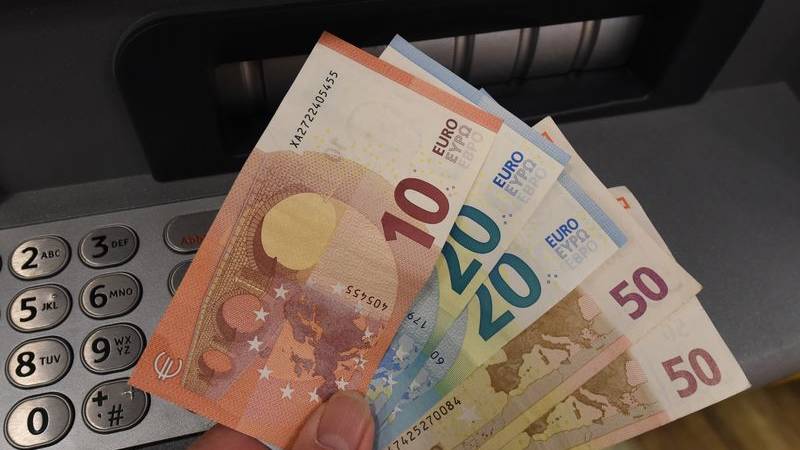According to a study, people in Germany fled into cash at the beginning of the Corona crisis. The crisis seems to be causing people to take even more cash into the
pillows, explained the direct bank ING Germany.
The circulation of notes and coins in the euro area increased by almost 100 billion euros, or 8 percent, in March, according to an analysis by the consulting firm Barkow Consulting on behalf of the bank.
Compared to the development in the previous months of January and February, a “Corona special effect” of about 30 billion euros can be seen. Of this, about 20 percent and 6 billion euros respectively were accounted for by private households in Germany.
At the beginning of the crisis, the Deutsche Bundesbank had also initially noticed an increase in demand for notes and coins. Subsequently, however, volumes fell significantly again.
According to the analysis, at the end of 2019, people in Germany were sitting on a total of 253 billion euros in cash. That was 32 billion, or 15 percent more than in the previous year. On average, this equates to more than 3,000 euros in cash for each Citizen of Germany.
According to the data, the boom in notes and coins began with the low interest rate phase in the euro area. Since the end of 2013, cash holdings in Germany have more than doubled, although inflation has seen an average decline in value of about one to two percent in recent years.
The past 20 years have been marked by different bubbles and crises in the financial markets. Added to this is the low interest rate phase of the recent past. “So it’s no wonder that the Germans seem to be a little unsettled and prefer to put some of their money under the pillow,” explains Thomas Dwornitzak, Head of Savings & Investing at ING Germany. Although cash retains the role of a “safe haven” from the point of view of customers, it is increasingly losing its role as a means of payment.
According to the German Savings Banks and Giro Association, Savings Bank customers paid their purchases with the Girocard in March more often than ever in a month. Some 206 million transactions were carried out with the plastic card – 11.4 percent more than in February. The proportion of contactless payments with Girocard without PIN entry rose to a record 52.2 percent in March. In the same month of the previous year, only about one in four Girocard payments was contactless (27.5 percent).
According to the German Credit Industry at the end of March, more than half of all Girocard payments were last made contactless. In December, that share was still 35 percent.
In contactless payment, buyers do not have to put their plastic cards in a reader and enter a PIN at the terminal, but only need to hold the card to the terminal. Deutsche Kreditwirtschaft (DK) recently doubled the limit for payment with the Girocard without PIN entry in trading from 25 to 50 euros per use. The new limit is to apply nationwide by autumn. Owners of a smartphone or smartwatch can completely avoid physical contact with the payment terminal.
Many stores encourage customers to pay in this way in the face of the Coronavirus pandemic to avoid potential transmission. Credit card providers such as Mastercard had also recently raised the limit for contactless payments.
According to recent surveys by the Bundesbank, most people in Germany pay for their purchases as usual. Only 25 percent of about 1000 respondents have changed their payment behavior.



